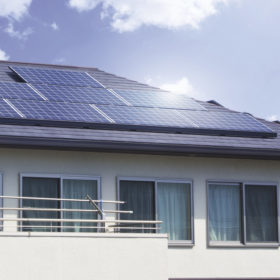Solar panels blasted with sound to better understand microcracking
Researchers at NREL and EPRI focused heavy bass sounds on solar panels to simulate the effects of wind-caused deflection.
SolarEdge launches residential battery and inverter
The DC-coupled battery has 94.5% round-trip efficiency and the inverter offers up to 11.4 kW power and 10.3 kW backup power.
Highway-side solar could produce 36 TWh annually
A collaboration between universities, nonprofits, and a geospatial mapper led to development of a highway solar evaluation tool.
How varied energy storage can enable a low-cost renewable energy future
Research from the U.S. National Renewable Energy Laboratory shows that high-renewables operation is possible, and less expensive, when a range of energy storage technologies are used.
Targeted marketing, better policies could support US low-income solar adoption
A new study shows that U.S. solar installers submit fewer quotes to low-income households, creating a supply-side barrier to solar adoption.
SolarRecycle website launches
SolarRecyle.org is designed to provide clear information for a more sustainable solar panel life-cycle.
Canada’s Grasshopper closes $48m financing deal for U.S. solar expansion
Grasshopper, a Canada-based renewable energy developer, will use $48 million of financing to support four solar+storage projects in Massachusetts.
Solar deployed on rooftops could match annual U.S. electricity generation
Researchers conducted a global assessment of rooftop solar PV potential using high-resolution imagery, big data, and machine learning.
Computer model for residential solar fault detection
Developed by US scientists, the model detects and classifies panel faults without the need for additional sensors. It leverages correlations between the power produced by adjacent panels to detect deviations from a panel’s otherwise expected behavior.
Sandia offers public access to CSP archives
Six decades of global concentrated solar power documentation make up the bulk of Sandia National Laboratories’ archive.











